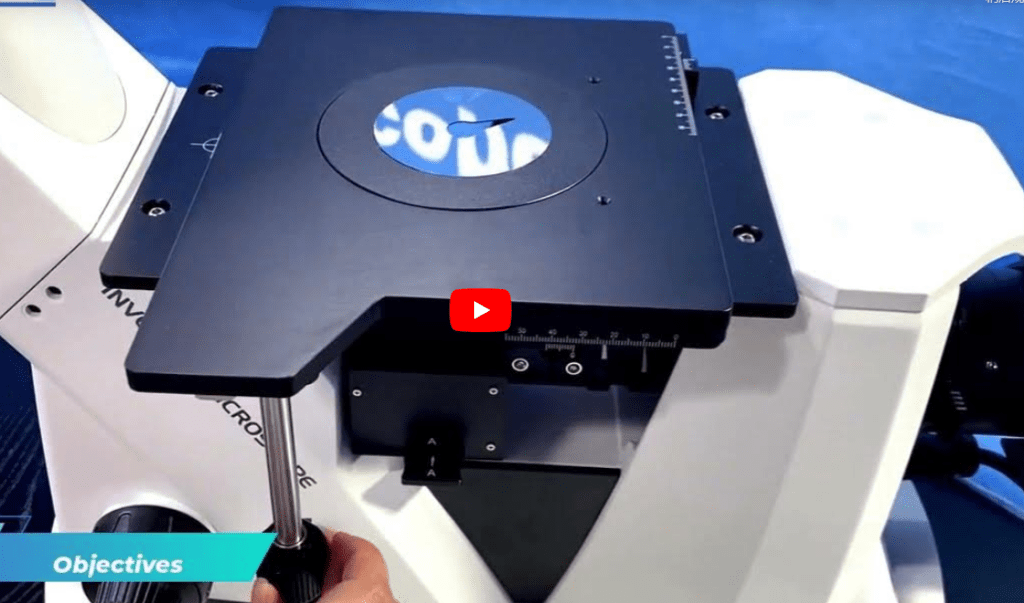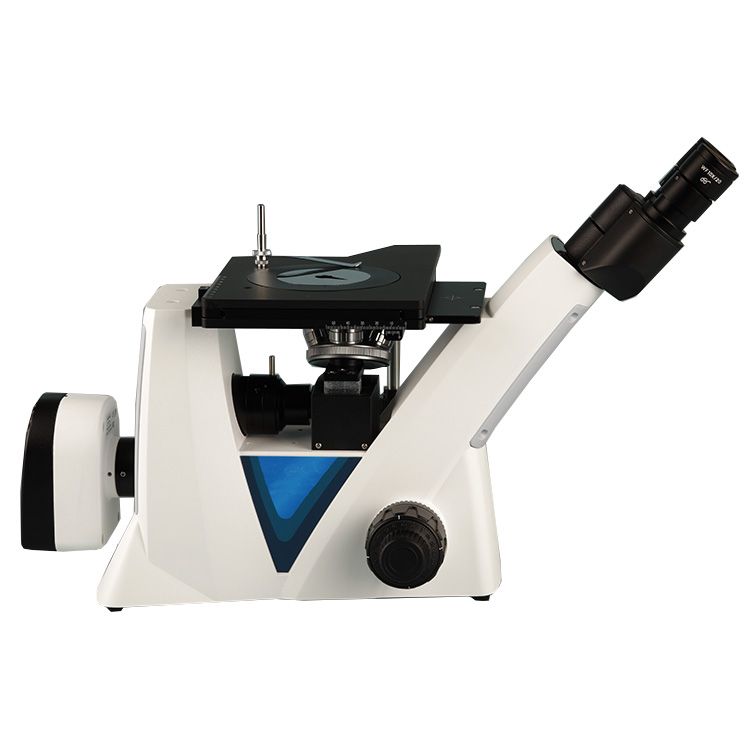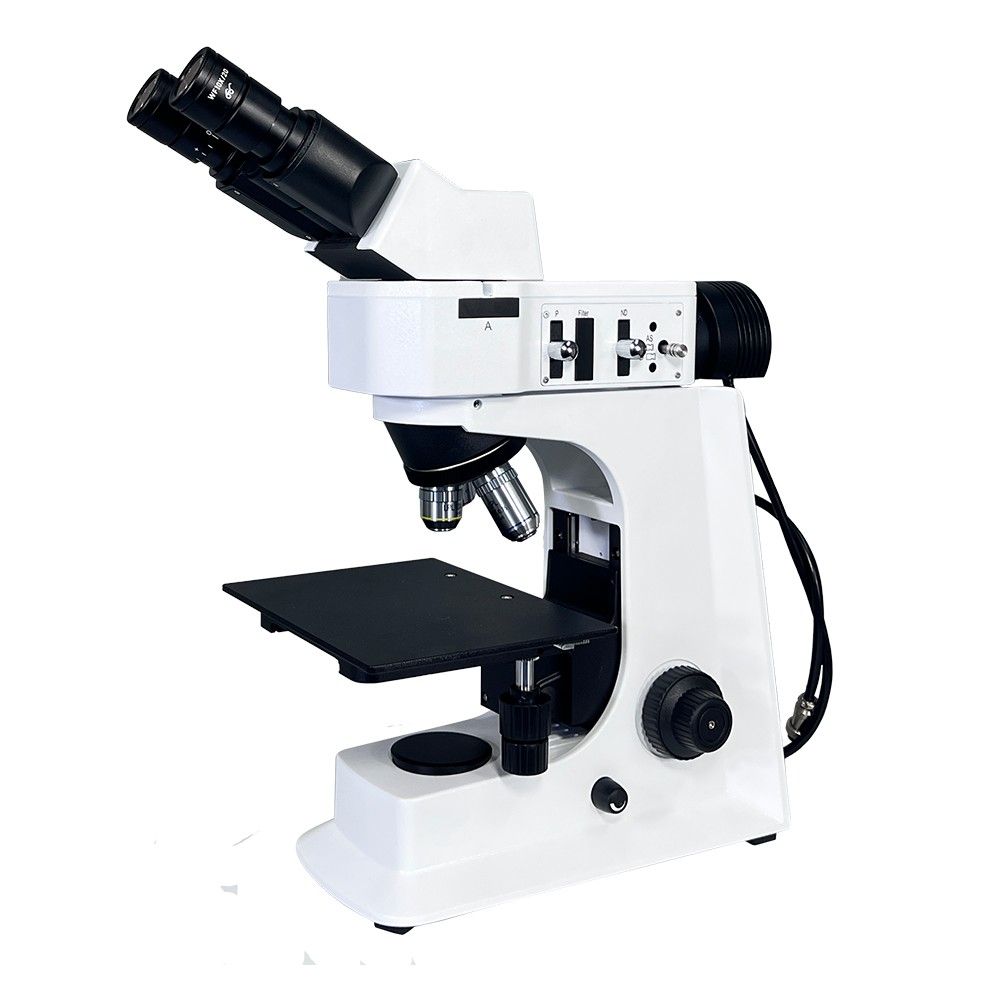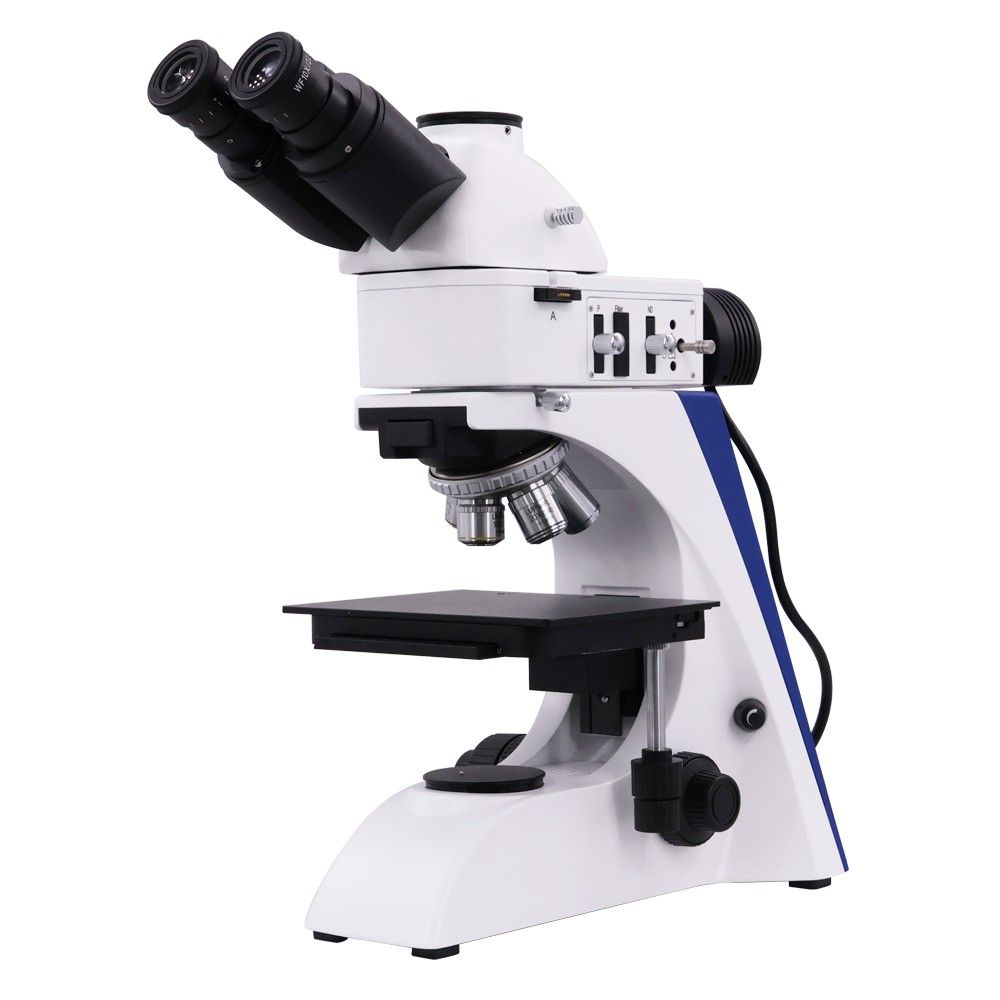When it comes to the buying stage of a metallurgical microscope, the query of “how much magnification do I really need?” is very common. This is the case for people who are conducting metal inspection or carrying out metal grain analysis.

A metallurgical microscope typically offers a magnification range between 50× and 1000×.
That means you can zoom in from the overall metal surface all the way down to fine-grain boundaries and microscopic inclusions
How Is the Magnification of a Metallurgical Microscope Determined?
A metallurgical microscope is capable of magnification due to two key components.
- Eyepiece lens magnification (typically 10x) plus Objective lens (ranging between 5x to 100x).
- The objective and eyepiece lenses are 10x and 50x, respectively.
Hence,
- 10x Eyepiece + 50x Objective = 500x magnification.
- 15x Eyepiece + 100x Oil Objective = 1500x magnification (typically for more advanced work).
Take note: Focus objectives also allow switching between lenses. 1500x magnification can allow for more detailed observation through rotation of the turret.
What Is the Typical Magnification Range of a Metallurgical Microscope?
The usual range of magnification provided by metallurgical microscopes lies between 50x and 1000x.
Here’s how this range compares with what other microscopes offer:
| Microscope Type | Magnification Range | Typical Use |
| Stereo Microscope | 10× – 90× | Surface scratches, weld beads, rough structure |
| Metallurgical Microscope | 50× – 1000× | Grain, inclusion, microcrack analysis |
| SEM (Scanning Electron Microscope) | 20× – 100,000× | Nano-level inspection |
In the simplest of terms:
- 50×–500× series satisfies 90% of the requirements of industrial metallography.
- 1000× magnification is used mostly for lab studies of fine-grained and inclusions.
What Can You See at Different Magnification Levels?
Understanding varying levels of detail captured at different planes of focus helps one invest in the appropriate lens. Power is not the only criterion to consider.
| Magnification | What You Can See | Typical Applications |
| 50× – 100× | Surface texture, scratches, weld joints, pits | Visual inspection, QC checks |
| 200× – 400× | Grain boundaries, phase changes, heat treatment effects | Grain size rating, phase structure study |
| 500× – 1000× | Micro cracks, inclusions, carbides, segregation | Failure analysis, microstructure research |
In the worth of a synopsis, a bit more focus is needed. For obtaining crystalline grains and heat treatment assessment, the user is expected to work mainly from the 200 and 400 range. Beyond that is a rarity.
Does Higher Magnification Always Mean Clearer Details?
Not at all.Many believe that ‘the higher the magnification, the sharper the image,’ but in reality, clarity is completely dependent on resolution.
- Resolution equals the proximity close enough to distinguish two separate points.
- Magnification equals the size the image appears.
If your lens or your lighting configuration lacks the ability to depict finer details, all you are doing is making the blurry image bigger.
Key points that stipulate resolution are:
- NA or Numerical Aperture of the objective lens.
- Illumination method.
- Sample preparation.
- The quality of the lens.
Try to think of it this way, the same way that you zoom into a low resolution image, all you are doing is making the pixels bigger.
So in this case, you don’t want to chase the highest number, but instead you want to emphasize on lighting control coupled with optical quality.
How to Choose the Right Magnification for Your Work
Which magnification is appropriate is less a question of how much money you have available and more a question of what exactly you intend to view.
| Observation Target | Recommended Magnification | Suggested Microscope Type |
| Surface defects / weld inspection | 50× – 200× | Upright metallurgical microscope |
| Inclusions/microcracks / carbides | 200× – 400× | Brightfield metallurgical microscope |
| Inclusions / micro cracks / carbides | 500× – 1000× | Oil-immersion metallurgical microscope |
- For most metallography labs, a microscope with a range of 50×–500× magnification is more than sufficient.
- Only specialized failure analysis or research labs require anything over 1000× magnification.
Final
The range of most metallurgical microscopes is usually between 50 and 1000 × magnification.
But, as a general rule, higher is not always better. What really counts is a good resolution, quality lenses, and appropriate lighting.
- For most general metallography, begin with a midrange magnification of 200×–400×.
- Only go higher if your analysis is aimed at micro inclusions or phase distinctions.
Use the magnification that your material, method, and microscope quality require, not just the highest number on the specification.









